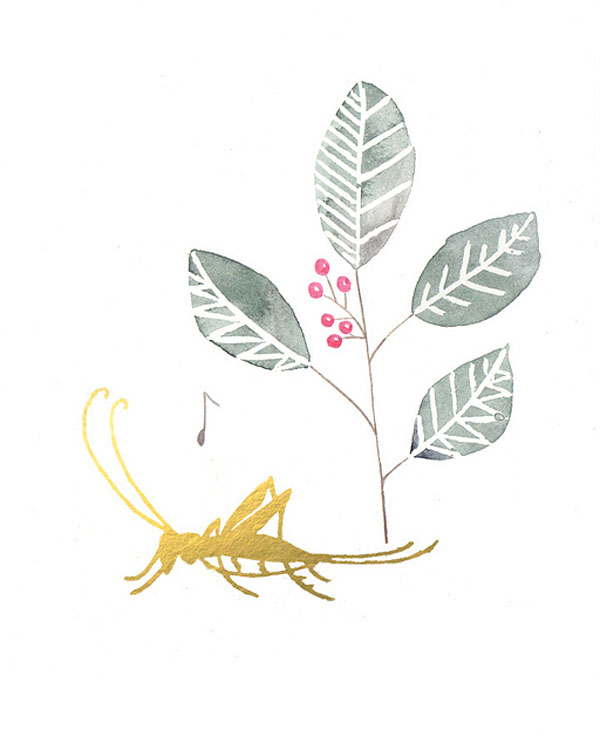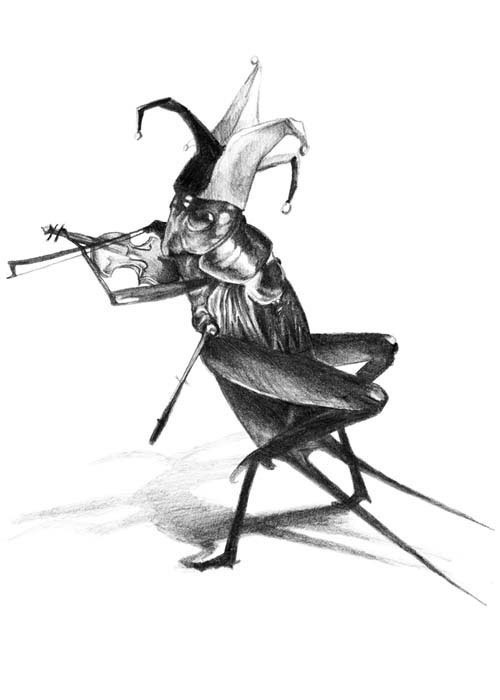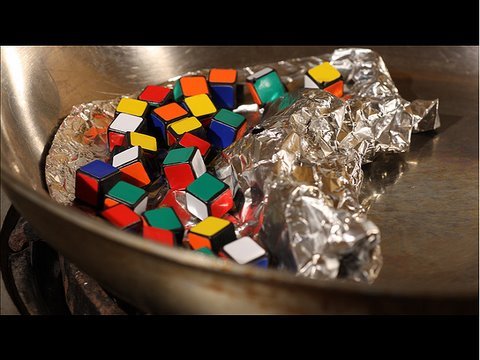(This music player can be wonky. If it doesn’t play click and listen here while you read.) In 1992, sound artist Jim Wilson recorded crickets chirping in his backyard. When he realized that crickets lived only a few weeks compared to human’s 75-years-plus, he slowed the recording correspondingly down to see what would happen. He was stunned by the result. Listen.
Wilson called this recording God’s Cricket Chorus: two tracks simultaneously playing the crickets original sound and their ‘chorale version’. It is stunningly beautiful and makes us wonder at the music hidden all around us.Part of God’s Cricket Chorus was later incorporated into the song Twisted Hair from Robbie Robertson‘s album Music for Native Americans in which opera singer Bonnie Jo Hunt accompanied the cricket chorus. She described the experience to Alex Chadwick of Hearing Voices:
And when I heard [the crickets]…I was so humbled, because I had not given them enough respect… they sound exactly like a well-trained church choir to me. And not only that, but it sounded to me like they were singing in the eight-tone scale….
They were saying cricket words. I kept thinking, ‘Oh, I almost can understand them. It’s a nice, mellow tone. And they never went off pitch until one of the interludes, where they went real crazy and they got back on again to where they were. And I know that people do not know that they’re listening to crickets unless they’re told that that’s what that is…

…Musician Tom Waits had another take on Wilson’s work:
Wilson, he’s always playing with time. I heard a recording recently of crickets slowed way down. It sounds like a choir, it sounds like angel music. Something sparkling, celestial with full harmony and bass parts – you wouldn’t believe it. It’s like a sweeping chorus of heaven, and it’s just slowed down, they didn’t manipulate the tape at all.
So I think when Wilson slows people down, it gives you a chance to watch them moving through space. And there’s something to be said for slowing down the world.“

When our friend David Saltman heard the divine cricket music, he remembered something he had learned as a Boy Scout. The tempo of cricket chirps corresponds to the temperature of the air. You can tell the temperature by counting the chirps of a cricket.
To convert cricket chirps to degrees Fahrenheit, count the number of chirps in 14 seconds then add 40 to get the temperature. For example: 30 chirps + 40 = 70° F
We wonder how the music changes as crickets respond to different temperatures.
via Alltop; Golden Cricket by Julianna Swaney; Cricket Playing Fiddle by Jeffrey Richter




Wow! Happy Thanksgiving…
Being far from the warmth of where I grew up,
the sound of a cricket is the sound of ‘home’.
The deepest place I can be.
Thank you for this beauty.